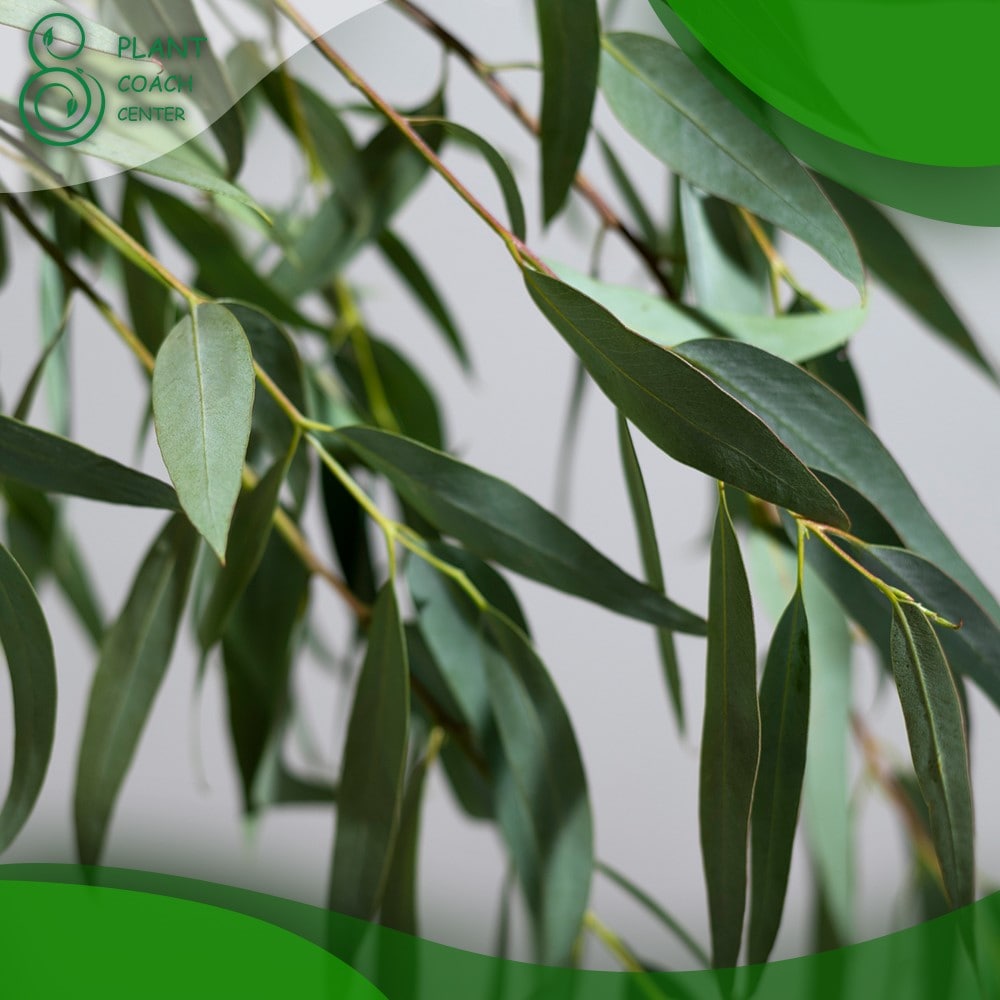Introduction to When to Prune Eucalyptus
Pruning eucalyptus trees is an essential practice for maintaining their health and appearance, but what often goes unnoticed is the critical role that timing plays in this process. In this guide, we’ll delve into the art of eucalyptus pruning and unravel the mysteries of when and why to prune these majestic trees. Whether you have eucalyptus trees in your backyard, garden, or as part of a larger landscaping project, understanding the timing is paramount to success.
Timing, as we’ll soon discover, is the linchpin that determines whether your pruning efforts result in vigorous, flourishing eucalyptus or unintended harm.this article of plantcoachcenter.com is your practical roadmap, tailored to ensure your eucalyptus trees thrive. So, let’s roll up our sleeves and explore the world of eucalyptus pruning, where the right timing can make all the difference in the world.

Understanding Eucalyptus
Eucalyptus trees, belonging to the Myrtaceae family, are a remarkable and diverse group native to Australia. They’ve gained international attention for their exceptional adaptability and a wide array of species, numbering over 700. These trees exhibit a broad range of sizes, with some remaining relatively modest while others tower over the landscape. This diversity makes them a versatile choice for a variety of purposes, including landscaping and forestry.
Growth Patterns and Characteristics:
Eucalyptus trees are renowned for their rapid growth, a trait that has made them a focal point of interest. Their growth patterns are marked by their astonishing height, with some species reaching impressive heights in a relatively short period. This is facilitated by their evergreen nature, ensuring they maintain their lush appearance throughout the year.
What sets eucalyptus trees apart are their leaves, known for their varying shapes and sizes. While some species sport elongated, lance-shaped leaves, others feature circular, coin-like foliage. Moreover, these leaves often contain aromatic oils, releasing a distinctive scent when crushed or brushed against. This aromatic quality not only adds to their charm but also deters certain pests, making them valuable in pest management strategies.
Popularity in Landscaping and Forestry:
In the realm of landscaping, eucalyptus trees have gained popularity for their aesthetic appeal. Their evergreen foliage provides a year-round splash of green in gardens and parks, enhancing the visual appeal of any outdoor space. Furthermore, their unique bark patterns, which can peel and reveal colorful patches underneath, add an intriguing textural dimension to landscapes.
In the forestry sector, eucalyptus trees are celebrated for their rapid growth and valuable timber. Their wood is prized for its strength and durability, making it an ideal choice for a wide range of applications, including construction, furniture, and paper production. Eucalyptus plantations are meticulously managed for sustainable timber production, contributing significantly to the global timber industry while also supporting local economies.
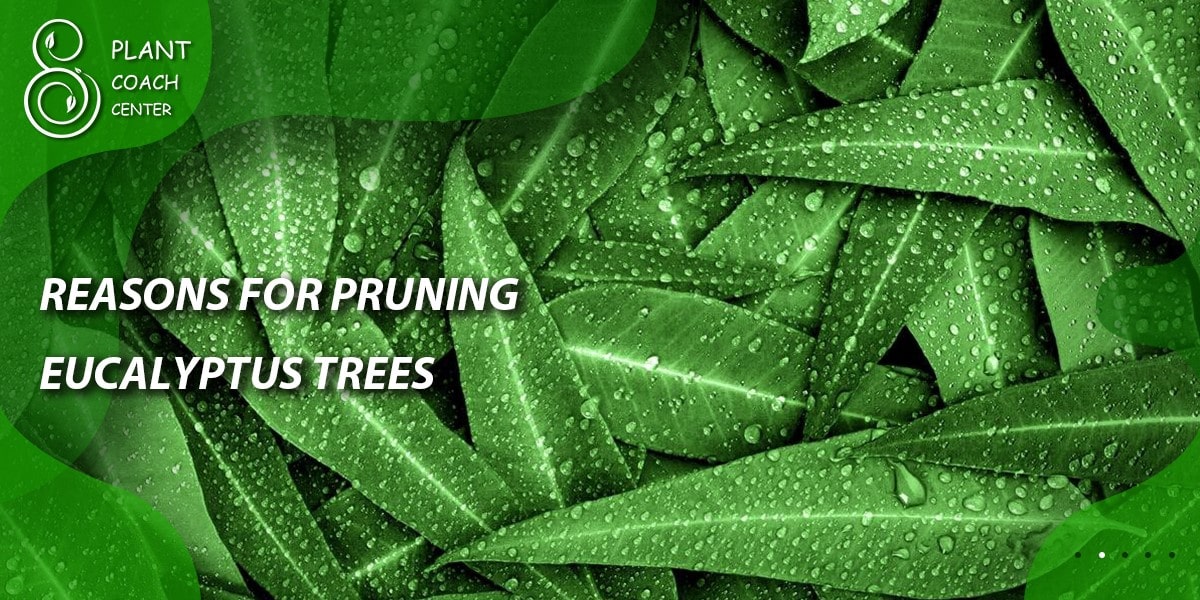
Understanding the diverse nature of eucalyptus trees, from their growth patterns to their varied applications, is essential when considering when and how to prune them effectively, a key topic we will explore further in this guide.
Reasons for Pruning Eucalyptus Trees:
Pruning eucalyptus trees is a vital horticultural practice with several compelling reasons. Firstly, it promotes the tree’s overall health by eliminating dead, diseased, or damaged branches. These decaying parts not only detract from the tree’s aesthetic but can serve as entry points for pests and diseases, threatening its vitality. Pruning also enhances air circulation within the canopy, reducing the risk of fungal infections and ensuring that the tree breathes freely.
Benefits of Pruning for Eucalyptus Trees:
Pruning brings about a host of benefits that extend beyond merely maintaining the tree’s health. One significant advantage is the substantial improvement in appearance. By selectively removing unruly branches or unsightly growth, the tree can be shaped into a more aesthetically pleasing form, making it a standout feature in any landscape.
Moreover, pruning plays a pivotal role in enhancing safety. It minimizes the risk of branches breaking or falling, particularly during storms or heavy winds, thus reducing potential hazards. This is particularly important when eucalyptus trees are near structures or high-traffic areas.
Pruning as a Tool for Managing Growth:
Another key reason for pruning eucalyptus trees is its role in managing growth. Eucalyptus trees are known for their vigorous and often exuberant growth patterns. Pruning allows you to control the tree’s size and shape, preventing it from outgrowing its designated space. This is especially crucial in urban and suburban settings where space constraints are common.
In addition to size management, pruning can also encourage bushier growth or direct growth away from unwanted areas. For instance, by selectively removing branches in specific directions, you can maintain a clear view or guide the tree’s growth away from structures or utility lines.
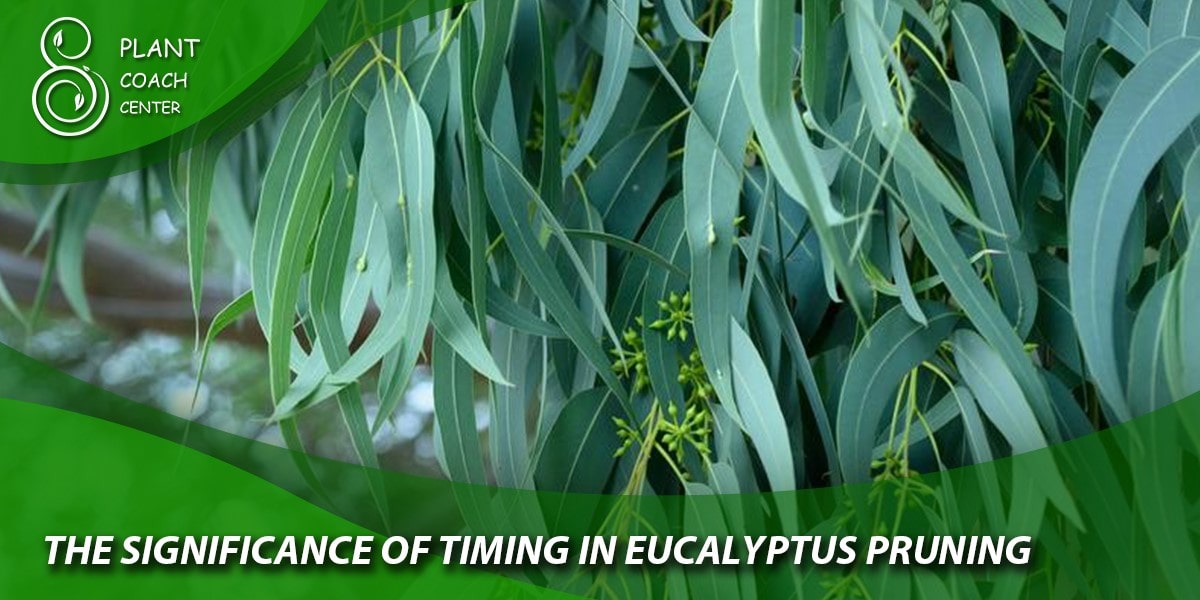
Understanding these reasons and benefits of pruning equips you with the knowledge to make informed decisions about when and how to prune your eucalyptus trees, ultimately ensuring their longevity, beauty, and safety.
The Significance of Timing in Eucalyptus Pruning:
Timing is the linchpin of successful eucalyptus pruning, and it can make or break the outcome of your efforts. The importance of timing cannot be overstated, as it directly impacts the health, growth, and overall well-being of your eucalyptus trees. Pruning at the right moment ensures that the tree responds optimally to the trimming, minimizing stress and maximizing the benefits.
Tailoring Timing to Specific Pruning Goals:
One key aspect to understand is that the timing of eucalyptus pruning should be tailored to your specific goals. If your primary aim is to encourage dense, bushy growth or to shape the tree for aesthetic reasons, then timing will differ from when you’re performing major maintenance or corrective pruning. Understanding your objectives is crucial in determining when to wield your pruning tools.
The Two Primary Pruning Seasons: Summer and Winter:
In the world of eucalyptus pruning, there are two primary seasons to keep in mind: summer and winter. Each season offers unique advantages and considerations.
Summer Pruning:
Summer pruning, which typically occurs during the warmer months, is ideal for tasks focused on shaping, controlling growth, or minor maintenance. During this season, the tree is in an active growth phase, making it responsive to pruning cues. This is the perfect time to shape your eucalyptus tree, direct its growth, or remove any unwanted branches. Keep in mind that summer pruning is generally less stressful for the tree since it can quickly heal and recover.
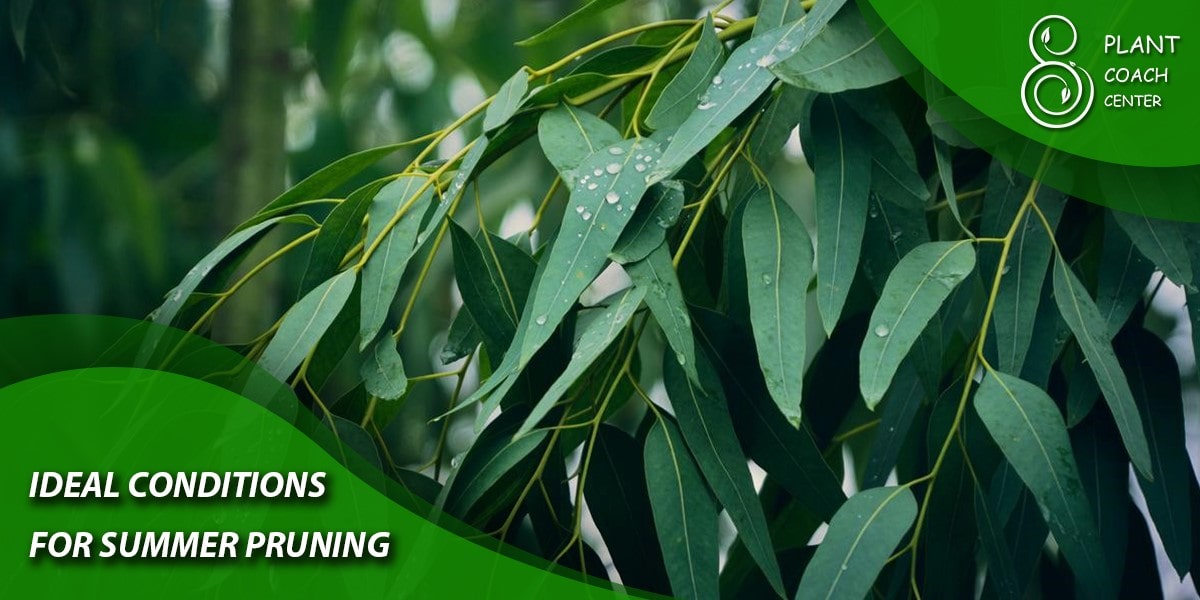
Winter Pruning:
Conversely, winter pruning, done during the dormant season, is best suited for major maintenance, such as the removal of large branches or corrective pruning. With the tree in its dormant phase, the risk of stressing the tree is lower, and there’s a reduced chance of attracting pests or diseases through fresh cuts. It’s also a good time to undertake rejuvenation pruning for older, overgrown eucalyptus trees.
In summary, the timing of your eucalyptus pruning should align with your specific goals, whether they involve shaping, maintaining, or rejuvenating the tree. Understanding the nuances of summer and winter pruning seasons empowers you to make well-timed decisions, ensuring the best possible results for your eucalyptus trees.
Ideal Conditions for Summer Pruning:
Summer pruning of eucalyptus trees hinges on specific conditions to yield the best results. Here’s a breakdown of the ideal conditions:
Warm and Dry Weather: Summer pruning is most effective during warm, dry weather when the tree is actively growing. Rain or humidity can create conditions favorable for diseases, so aim for a period of relative drought when planning your pruning.
Late Spring to Early Summer: Timing within the summer season matters. Ideally, start your pruning efforts in late spring or early summer, when the tree is flush with new growth and has fully leafed out. This is when the tree’s energy is directed towards growth, making it more responsive to pruning cues.
Shaping and Controlling Growth:
Summer pruning is your go-to strategy when you want to shape your eucalyptus tree or exert control over its growth. Here’s why it’s particularly well-suited for these tasks:
Encouraging Bushier Growth: To encourage bushier growth or a denser canopy, selectively prune the tips of branches during summer. This redirects the tree’s energy towards lateral growth, resulting in a fuller appearance.
Shaping for Aesthetics: If you’re aiming for a specific aesthetic, such as maintaining a certain height or creating a particular shape, summer pruning allows you to sculpt the tree according to your vision. You can trim branches to achieve the desired form and symmetry.

Tips for Successful Summer Pruning:
Now that we’ve established the conditions and purposes of summer pruning, let’s delve into some practical tips for executing it effectively:
Use Sharp and Clean Tools: Start with sharp and clean pruning tools, such as sharp bypass pruners or loppers. Dull or dirty tools can damage the tree and increase the risk of disease transmission.
Identify Branches Carefully: Before making any cuts, take time to identify the branches you want to prune. Focus on removing dead or diseased branches, as well as any that cross or rub against each other.
Practice Pruning Techniques: Employ proper pruning techniques by making clean, angled cuts just above a node or branch junction. Avoid leaving stubs, as they can invite pests and diseases.
Limit the Amount Pruned: To minimize stress on the tree, avoid removing more than 25% of the foliage in a single pruning session. Over-pruning during summer can lead to excessive stress and reduced vitality.
Monitor for Growth: After pruning, keep a watchful eye on your eucalyptus tree throughout the summer. New growth should start to emerge from the pruned areas, signaling that the tree is responding positively to the pruning.
By adhering to these guidelines and considering the specific goals you have in mind for your eucalyptus tree, you can master the art of summer pruning, ensuring that your tree flourishes and maintains its desired shape during the warmer months.
Ideal Conditions for Winter Pruning:
When it comes to winter pruning of eucalyptus trees, timing and conditions are pivotal for a successful outcome. Here’s what you need to know about the ideal conditions:
Dormant Season: Winter pruning is best carried out during the dormant season, typically from late fall to early spring. This period is characterized by the tree’s reduced growth activity, making it less responsive to pruning stimuli. The absence of active sap flow minimizes the risk of excessive bleeding from pruning wounds.
Dry Weather: Choose dry and preferably mild winter days for pruning. Rain or snow can make working conditions uncomfortable and may introduce moisture-related issues to freshly cut branches. Aim for a time when the tree is free from frost or frozen conditions to prevent damage to the tree.

Suitable for Major Maintenance:
Winter pruning is particularly well-suited for major maintenance tasks on your eucalyptus tree. Here’s why it’s the go-to season for these important tasks:
Large Branch Removal: If you need to remove substantial branches or conduct corrective pruning, winter is the time to do it. With the tree in its dormant phase, there’s a reduced risk of stressing the tree, and it’s less likely to attract pests or diseases through freshly cut branches.
Rejuvenation Pruning: Older, overgrown eucalyptus trees benefit significantly from rejuvenation pruning during winter. This process involves removing older, less productive branches to encourage new, vigorous growth in the spring.
Tips for Successful Winter Pruning:
Now that we’ve covered the ideal conditions and purposes of winter pruning, let’s explore some practical tips to ensure your winter pruning efforts are effective:
Prune When It’s Dry: Wait for a dry spell within the winter season to commence your pruning. Moisture on the tree can lead to the spread of diseases and make the pruning process less efficient.
Safety First: Winter pruning often involves working with larger branches, so prioritize safety. Wear appropriate personal protective equipment (PPE) such as gloves, eye protection, and a hard hat. Ensure that your tools are in excellent condition and sharp.
Start with Dead or Diseased Branches: Begin by identifying and removing any dead or diseased branches. This not only enhances the tree’s health but also provides a clearer view of the tree’s structure for further pruning.
Make Clean Cuts: Employ proper pruning techniques by making clean, angled cuts just outside the branch collar. Avoid leaving stubs or jagged edges, as these can invite problems.
Monitor for Spring Growth: Keep an eye on your pruned eucalyptus tree as winter transitions into spring. Look for signs of new growth emerging from the pruned areas, which indicates that the tree is responding positively to the pruning.
By adhering to these guidelines and considering the specific maintenance or rejuvenation needs of your eucalyptus tree, you can make the most of winter pruning. This season provides an excellent opportunity to ensure your tree’s health and vitality in preparation for the upcoming growing season.
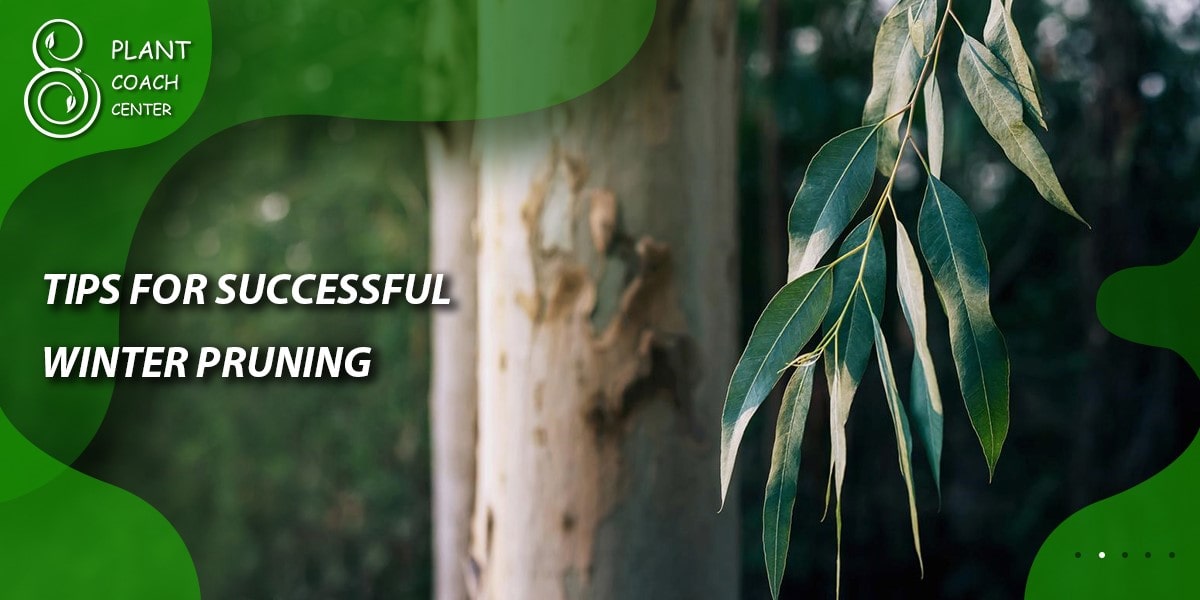
Conclusion
In conclusion, the timing of eucalyptus pruning is a critical factor that profoundly influences the health and aesthetics of these magnificent trees. Understanding the ideal seasons, such as summer for shaping and controlling growth, and winter for major maintenance, is paramount. Well-timed pruning not only promotes tree health by eliminating diseased or damaged branches but also enhances safety and appearance.
It encourages bushier growth, aids in shaping for aesthetics, and allows for control over the tree’s size. With this knowledge in hand, we encourage readers to embrace the art of eucalyptus pruning, applying it as a powerful tool to nurture healthier, safer, and more visually stunning eucalyptus trees in their landscapes. Your efforts will not only benefit the trees themselves but also enhance the overall beauty and sustainability of your outdoor spaces.
FAQs
When is the best time to prune eucalyptus trees?
Summer for shaping, winter for major maintenance.
How do I identify the right branches to prune?
Start with dead, diseased, or crossing branches.
What tools do I need for eucalyptus pruning?
Sharp bypass pruners or loppers are essential.
How much of the tree can I prune in one session?
Avoid removing more than 25% of foliage at once.
Can I prune eucalyptus in rainy or wet conditions?
It's best to prune when it's dry to prevent disease.
Why is timing crucial in eucalyptus pruning?
Well-timed pruning maximizes tree health and appearance.


